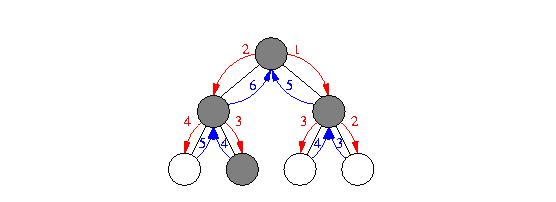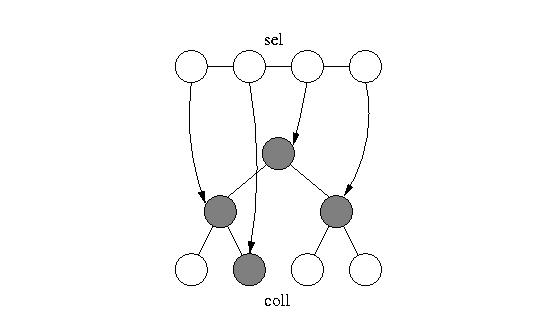[Next]
[Up]
[Previous]
Next: Complex Collective Operation Patterns
Up: Object Groups
Previous: Topology Classes
Dynamic sub setting of groups is achieved through masked
operations that are executed conditionally
depending on the current state of the individual group members.
Conditions are expressed by means of boolean predicate functors.
The masked collective map(), gather() and reduce() operations
apply the specified functor only to those members
for whom the specified predicate evaluates to true.
GroupOf<Member> group(...);
Result* resultByRank = new Result[group.size()];
group.map(predicate,...);
group.step(predicate,...);
group.gather(predicate,...);
Result r = group.reduce(predicate,...);
In the case of masked reductions (fig. [*])
the identity element of the reduction
functor is filled in for all members that fail to match
the specified predicate.
Figure:
Masked reductions
 |
Since the masked operations require visiting all members of the group
they should only be applied
if either the majority of members can be expected to match the predicate
or the state of the members changes rapidly and unpredictably.
Often recurring operations on the same subset should be implemented with
selections instead.
Selections are indirect groups that refer to specific members
of other groups.
Unlike masked operations,
selections allow dynamic sub-setting of groups with minimal
communication overhead. When a selection is created,
the membership is determined
by a boolean predicate functor. Collective operations
applied to the selection are in fact applied to the original
group defined in the order of the selection's topology class.
CollectionOf<Any,BinTree> coll(...);
Selection<Any,List> sel(predicate, coll);
sel.map(...);
Result r = sel.reduce(...);
Note, that the topology of the selection and
the original group may differ as shown in figure [*].
Figure:
Selections
 |
This allows us to create multiple selections with different topologies
and we can choose those topologies that are most appropriate
for the collective operations we are going to apply.
When an application initially has a topology that does not support
collective operations very well, we can easily create a complete selection
with a tree topology that refers to all members of the original group
and apply collective operations on the selection instead.
[Next]
[Up]
[Previous]
Next: Complex Collective Operation Patterns
Up: Object Groups
Previous: Topology Classes
